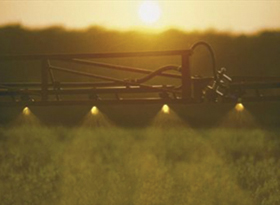At every trade show and field day, we hear the story (thankfully, fewer times each year) about how “hard it is to kill annual ryegrass.” Invariably, when you ask a couple of specific questions, the problem becomes very clear. “In some things about agriculture, you can cut corners and not cause too many problems,” said Dan Towery. “With annual ryegrass, you’re asking for trouble if you deviate from a strict management protocol.”
So, the first question Dan asks people who have trouble with annual ryegrass management:
- Did you add AMS (ammonium sulfate) to the tank water and agitate it BEFORE adding the glyphosate?
Ammonium sulfate is a surfactant, whose purpose is to improve retention on the leaf surface and increase movement of the herbicide from the leaf surface into the leaf. AMS also softens “hard” water, helping to nullify the impact of naturally-occurring magnesium and calcium.
WIthout AMS, the minerals in water will compromise the effectiveness of glyphosate.Adding AMS helps the translocation of glyphosate to the annual ryegrass.
- What time of day was the glyphosate sprayed on the annual ryegrass cover crop?
Proper translocation of glyphosate into the plant tissue depends on the air temperature, the weather and what time of day you apply it. For more specific information on this particular aspect, click here to take you to the annual ryegrass website.

